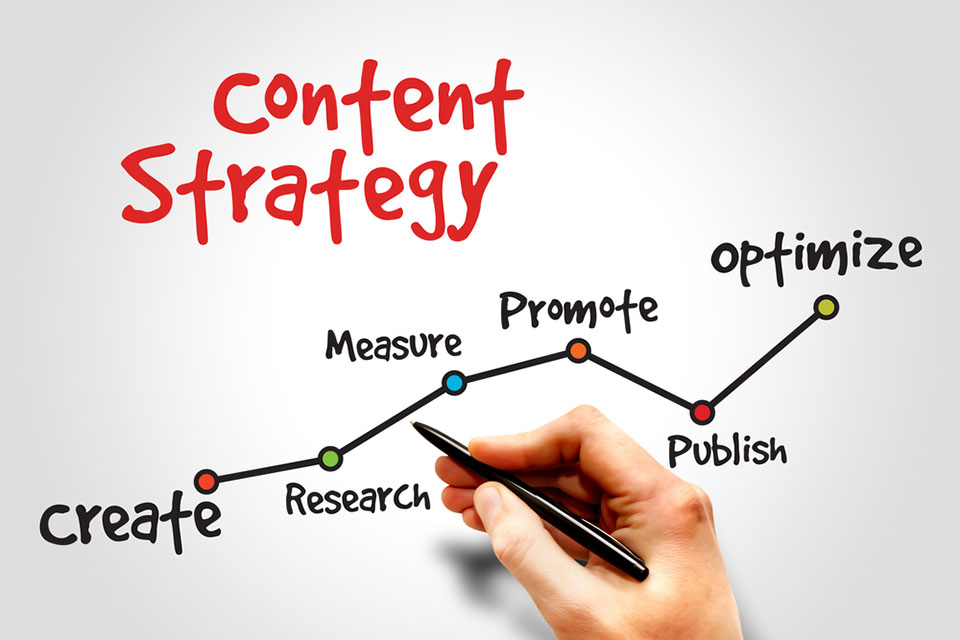Why Content Marketing, and Why Now

Content was already king when COVID-19 came along. Now that the pandemic has shattered the standard B2B marketing plan that included face-to-face meetings and trade show interactions, content has become a primary source of information for those on the buyer’s journey. As its importance increases, it is more critical than ever to create content that is relevant and compelling. Doing so grabs prospects’ attention and starts a conversation that leads to brand trust and, ultimately, to sales.
Content is the underpinning of all digital marketing channels, including SEO, public relations, social media and traffic generation. Hubspot found that 70% of marketers are actively investing in content marketing in 2020. Instead of trying to directly sell your products or services, you are offering useful, relevant content to your prospects and customers to help them solve their problems. So then, the focus is on content – whether in the form of infographics, videos, whitepapers, webpages or information in other formats.
The best content signals to your prospects that you are a passionate expert who wants to share your expertise with them — free of charge. To accomplish this goal, it’s important to focus on three factors: business objectives, the sales funnel and personas.
Three Building Blocks of Content Marketing

Let’s look at each of these factors more closely.
- Business objectives: The first step in crafting a content marketing strategy that moves the needle in the right direction is to make sure it lines up with your business goals. Understanding what business goals you want to achieve or support gives you the needed clarity to set the appropriate marketing objectives. Do you want to strengthen customer loyalty and reduce churn? Perhaps the goal is to attract new prospects or overcome objections. Once your objectives and KPIs are clear, you can develop your content marketing campaign.
- Buyer personas: It’s critical to understand who your buyers are, but you must take it a step further. Find the individuals within your audience who have the influence and enthusiasm that will help grow your company. If your audience is divided among several types of buyers, refine your buyer personas to focus on those most likely to convert.
Begin by zeroing in on some of your most loyal customers. Then find the primary decision-makers who championed the decision to work with you. There are likely sales or service team members in your company who have close relationships with these people. Find those employees, and use their insights along with sales data to create a persona – data points like background, demographics, goals/motivations, biggest fears, challenges, common objections and hobbies. - Sales funnel: Buyers are researching providers online, and the content that they encounter on your web, email, search and social channels is what will move them down the funnel. In order to drive success with B2B content marketing, you need to understand how the content you create fits into the different stages of your sales funnel.
Your funnel is unique to your business and is based on elements such as your sector, solution, business model, pricing structure and target market. It may look very different from your competitors’. In fact, Forrester notes that “today’s B2B buyer might be anywhere from two-thirds to 90% of the way through their journey before they reach out to a vendor.” Talk with the sales team about the particulars of your sales funnel, then use that intelligence to create a marketing strategy that addresses leads at the top, middle and bottom of that funnel.
Benefits of Content Marketing
Baking the aforementioned elements into your strategy yields several benefits.
- Solving problems leads to sales: When buyers are searching for ways to overcome their challenges, your content is there to help over and over. In fact, marketers who use blogs as a primary communications tactic are 13x more likely to see return on investment.
- Cultivating community: One byproduct of content marketing is that it establishes thought leadership, which enables you to gain credibility and encourage stronger relationships with existing and future customers. You become a trusted source they return to again and again.
- Long-term value: Good content keeps working for you long after you’ve created it, bringing in qualified leads over the long term. That reduces paid marketing expenses. Demand Metric found that not only does content marketing cost 62% less than traditional marketing efforts, but it generates three times the number of leads.
A great example of content marketing done well comes from HubSpot. Their efforts demonstrate the powerful results that can result from a comprehensive strategy. HubSpot is well-known because they produce massive amounts of content. They sell inbound market, sales and service software, but their claim to fame among marketers is the quantity and quality of their marketing resources, many of which are free. Their repertoire includes case studies, guides, eBooks, blog posts, courses, reports and more. It all drives free traffic to their site, with the end goal of converting those leads into customers without spending a dime on advertising.
Share Your Expertise
The pandemic forced a massive shift in how businesses communicate with customers and prospects. Content marketing has become an even more important tool for educating and interacting with target audiences. High-quality content that addresses pain points demonstrates expertise and will win the trust of those looking for new products and services. Use the above best practices to begin or expand a content marketing strategy that builds trust and brings in leads.
Have you read?
World’s Best Cities For Street Food-Obsessed Travellers.
Family Friendly Beach Vacations In The United States.
World’s Best Places To Visit.
Best Wedding Destinations in The Caribbean.
Bring the best of the CEOWORLD magazine's global journalism to audiences in the United States and around the world. - Add CEOWORLD magazine to your Google News feed.
Follow CEOWORLD magazine headlines on: Google News, LinkedIn, Twitter, and Facebook.
Copyright 2025 The CEOWORLD magazine. All rights reserved. This material (and any extract from it) must not be copied, redistributed or placed on any website, without CEOWORLD magazine' prior written consent. For media queries, please contact: info@ceoworld.biz









